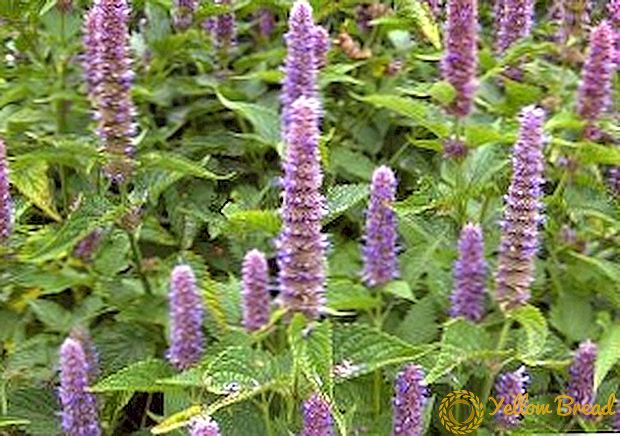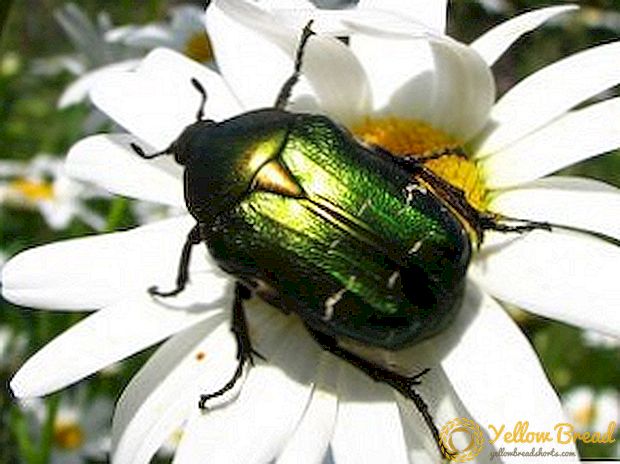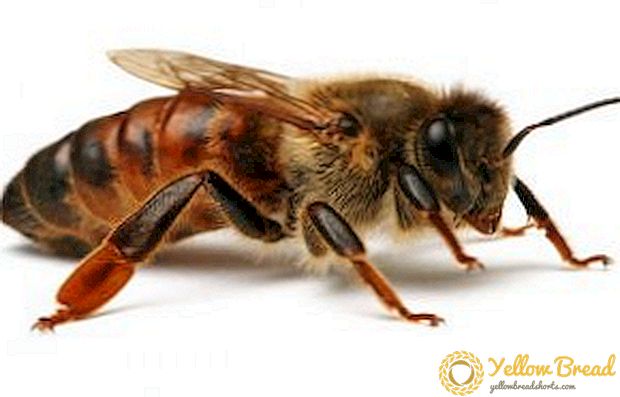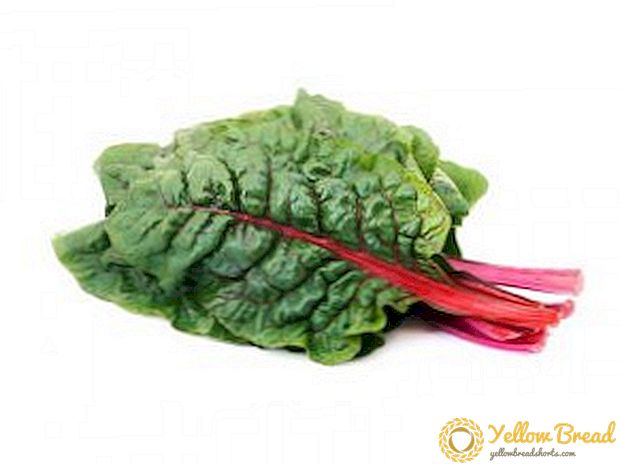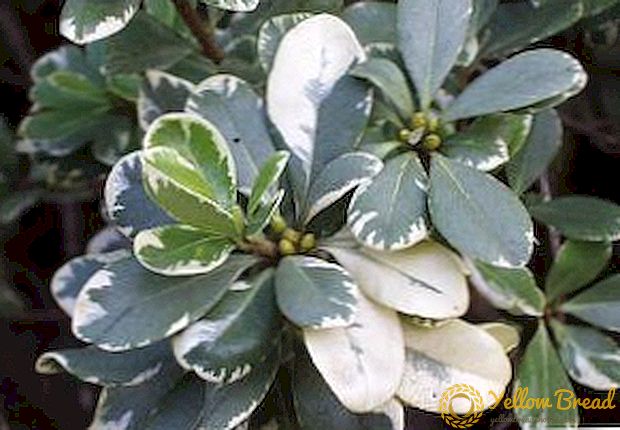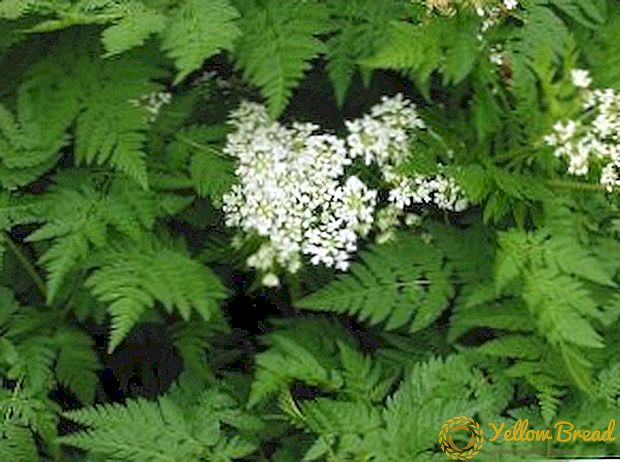 Chervil was known in our latitudes since ancient times and they called it snacks, kerbel, kupyr. It was used in food and as a remedy. Today, the plant continues to be used in traditional medicine and cooking, but its useful properties have found application in other areas of human life.
Chervil was known in our latitudes since ancient times and they called it snacks, kerbel, kupyr. It was used in food and as a remedy. Today, the plant continues to be used in traditional medicine and cooking, but its useful properties have found application in other areas of human life.
- Chervil (kupyr): chemical composition and nutritional value of the plant
- Useful properties of chervil as used in traditional medicine
- Apply fresh chervil juice
- How to make a decoction of chervil
- What is useful tea from Chervil
- How to use the infusion of chervil
- Application of essential oil
- The use of chervil in nutrition
- How to use chervil in cosmetology
- Chervil and cooking
- Chervil: how to prepare and store medical raw materials
- Chervil: are there any contraindications
Chervil (kupyr): chemical composition and nutritional value of the plant
Chervil is always noticeable among other plants. It reaches a height of 70 cm and has tall, erect and branched stems with an intense aroma. The leaves are smooth, dissected, sometimes curly, have a bright green tint.
The flowers of the plant are white or pale pink. The inflorescences are shaped like dill umbrellas.Another distinctive feature of the plant - it does not fade until mid-autumn.
Herb Chervil contains mineral salts, glycosides, vitamins A and C, rutin, protein, various micro and macro elements. In folk medicine, the plant is valued for its high content of vitamin A, as well as carotenoids, which are powerful antioxidants.
100 g of a plant contains:
- 4740 mg of potassium;
- 130 mg of magnesium;
- 1346 mg of calcium;
- 83 mg of sodium;
- 31.95 mg of iron;
- 450 mg of phosphorus;
- 2.1 mg manganese;
- 29.3 mcg of selenium;
- 0.44 μg of copper;
- 8.8 mg zinc;
- 5850 mg of vitamin A;
- 1.99 mg of B vitamins;
- 50 mg of vitamin C;
- 11.3 g of dietary fiber;
- 7.2 grams of ash.
Useful properties of chervil as used in traditional medicine
Regularly eating kupyr in food, you can adjust the metabolism, get rid of excess fat, improve memory and relieve depression. Previously, traditional healers used it as an expectorant, diuretic, which has an additional astringent, tonic and stimulating effect.
 Open chervil has other beneficial properties. It helps to normalize blood pressure, a positive effect on the cardiovascular system of the body. Good effect on the work of the kidneys, respiratory organs.
Open chervil has other beneficial properties. It helps to normalize blood pressure, a positive effect on the cardiovascular system of the body. Good effect on the work of the kidneys, respiratory organs.
Apply fresh chervil juice
The bubble is used in various forms, its juice has useful properties, which is used as an excellent expectorant. Use not pure juice, but its solution.: 30-50 drops per half glass of water. Drink it before meals three to four times a day. Such a solution is not only able to fight cough, but also strengthen the immune system, purify the blood.
Fresh juice chervil is able to fight skin diseases such as scrofula, lichen. It helps to heal wounds that can not be delayed for a long time. It is also used in inflammation of the lymph nodes.
How to make a decoction of chervil
 For cooking broth Two tablespoons of the leaves of the plant are taken from the cupola and boiled for 15 minutes in 0.5 l of water. Sometimes it is recommended to add honey to the decoction. If you prepared a chervil this way, the question arises: how to take it. The recommended dose is half a glass three times a day.
For cooking broth Two tablespoons of the leaves of the plant are taken from the cupola and boiled for 15 minutes in 0.5 l of water. Sometimes it is recommended to add honey to the decoction. If you prepared a chervil this way, the question arises: how to take it. The recommended dose is half a glass three times a day.
A bubble in this form is beneficial for gout, liver diseases, female diseases, including during menopause. Outwardly it is used in the treatment of edema, arthritis, boils, boils. Crushed leaves help heal wounds.
What is useful tea from Chervil
The leaves of the plant are used for the preparation of therapeutic tea, which, along with toning the body, soothes the central nervous system. Therefore, it is recommended to drink it in case of depressive conditions, for the prevention of sclerosis, and various nervous disorders. At the same time, it has a positive effect on the gastrointestinal tract.
How to use the infusion of chervil
 Tincture of chervil recommended for weight loss.It helps to safely get rid of extra pounds. To prepare it, pour two tablespoons of crushed dry leaves of a plant with a glass of water. Insist them for at least an hour. Take it before a meal in 30 minutes, 50 ml three to four times a day.
Tincture of chervil recommended for weight loss.It helps to safely get rid of extra pounds. To prepare it, pour two tablespoons of crushed dry leaves of a plant with a glass of water. Insist them for at least an hour. Take it before a meal in 30 minutes, 50 ml three to four times a day.
Application of essential oil
The seeds of the plant are rich in essential oil. It is obtained by the distillation of grains with steam. Used in cooking in the manufacture of meat products, as well as in the production of non-alcoholic and alcoholic beverages.
At home, chervil oil is not recommended. It contains a carcinogenic and toxic chemical compound, methylcavicol. With the wrong use of oil, you can get the opposite effect of the therapeutic.
The use of chervil in nutrition
 Most often in dietology a plant is used to remove toxins and toxins from the body, activate metabolism and impart a general tone to the body. Cleansing the body first due to diuretic effect - it removes excess water, and with it, toxins, cleanses the liver.
Most often in dietology a plant is used to remove toxins and toxins from the body, activate metabolism and impart a general tone to the body. Cleansing the body first due to diuretic effect - it removes excess water, and with it, toxins, cleanses the liver.
Since chervil has a rich composition of chemicals,it nourishes the body with nutrients and biologically active elements, it will establish metabolic processes in it, improve the protective functions of the body. This effect is best felt in the spring. With regular use of chervil during this period, not only the incidence, but also weight decreases.
How to use chervil in cosmetology
The plant has found its application in cosmetology. Its extract is included in the composition of various creams, especially those designed to care for problem skin. Such agents tone the epidermis and the deeper layers of the skin, have a therapeutic effect on them.
Chervil and cooking
Due to the sweetish anise flavor, the plant has long been used in cooking as a spice. Fresh green plants are used in the preparation of various sauces, salads with mushrooms, spring broths and soups, dishes from poultry, fish, lamb, using eggs.
 It is excellent with peas. Sometimes for these purposes they take the root of the plant. Fresh greens are used to decorate dishes, sandwiches. If you mix chopped herbs with butter or cheese, you can make a delicious sandwich spread.
It is excellent with peas. Sometimes for these purposes they take the root of the plant. Fresh greens are used to decorate dishes, sandwiches. If you mix chopped herbs with butter or cheese, you can make a delicious sandwich spread.
In addition, it is used in the preparation of wine vinegar or infusion of olive oil. For this, it is enough to add a few sprigs of the plant to the bottle. It can be used in combination with other spices. It is believed that the perfect aromatic compositions are obtained with basil and parsley.
Chervil is recommended to use only fresh, although you can find it in dried form. Some culinary practitioners practice the dry salting of the kupyr, as well as pickling or fermenting leaves and stalks. But it is believed that after such processing, as well as after freezing, it loses a significant proportion of its flavor.
Chervil: how to prepare and store medical raw materials
 In order for the Chervil to retain its benefits and not cause harm, it is important to properly prepare it. For medicinal purposes, use the root and leaves of the plant.
In order for the Chervil to retain its benefits and not cause harm, it is important to properly prepare it. For medicinal purposes, use the root and leaves of the plant.
Harvesting the root takes place in the fall.It is dug out and washed from the ground, cleaned, cut into pieces and dried in the oven or dryers. Store the root is recommended in wooden boxes. Remember that after two years of storage, it will lose its useful properties.
The leaves, on the other hand, are harvested at the beginning of summer, before the plant blooms. They also need to be washed and dried. But drying takes place in natural conditions, away from the direct rays of the sun, exclusively in the shade.
True harvested in this way the leaves are not used in cooking. After drying, they lose most of their flavor and taste. The same thing happens with the freezing of the plant. For culinary purposes, it is best to keep it in the refrigerator in the fruit compartment or in a cold water jar.
Chervil: are there any contraindications
 With such a usefulness of the plant, the logical question arises: does the Chervil have contraindications? The plant itself is non-toxic and absolutely safe to eat. Problems can occur only with individual intolerance. Care should be taken to use chervil seed oil, since it is in this form that the cobweb is toxic.
With such a usefulness of the plant, the logical question arises: does the Chervil have contraindications? The plant itself is non-toxic and absolutely safe to eat. Problems can occur only with individual intolerance. Care should be taken to use chervil seed oil, since it is in this form that the cobweb is toxic.
It should be very careful when harvesting plants. Outwardly, it is very similar to hemlock, which is poisonous. Therefore, if you are not confident in your knowledge, it is better to buy already prepared Chervil.
Chervil is a plant rich in vitamins and other beneficial substances. In addition, it is valued for its taste and unmatched aroma. It is used not only in the treatment of various diseases, but also in cooking, and sometimes in cosmetology. But in order to get the expected effect, it is important to know which parts of the plant to harvest during which period.

